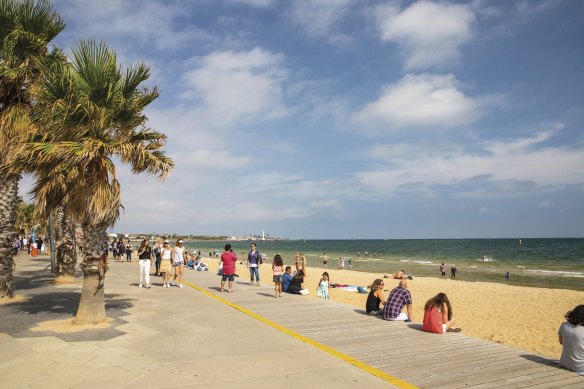Here are Melbourne’s bulk-billing black holes and highest GP gap fees

Save articles for later
Add articles to your saved list and come back to them any time.
Key points
- A nationwide survey has found just 35.1 per cent of doctor’s clinics still offer fully subsidised visits.
- Only 6.7 per cent of clinics in the Melbourne electorate of Higgins said they still offer bulk-billing.
- Holt is the only electorate in Victoria where more than 80 per cent of clinics bulk-bill.
- People in Tasmania and the ACT have the least access to affordable primary care in Australia.
- The 10 federal electorates with the highest rates of bulk-billing in the country were all in western Sydney.
Most residents in Melbourne are paying $47 or more on average for each visit to the doctor, a survey of more than 6000 doctors’ clinics has revealed, while six Victorian electorates are each home to less than a handful of bulk-billing GP clinics.
Only three GP clinics (6.7 per cent) in the electorate of Higgins in Melbourne’s inner south-east said they still offer bulk-billing, and the remainder of patients pay an average of $47.35 for each trip the doctor, in the worst scenario for patients in Victoria.
In Goldstein, Casey, Deakin and the rural seat of Bendigo, just four clinics in each electorate said they offered bulk-billing.
Victoria’s most expensive average gap fee is $48.74 in the Melbourne bayside electorate of Macnamara, where just 15 per cent of clinics bulk-bill. Out-of-pocket costs are on average $48.45 in central Melbourne and $47.91 in inner-eastern Kooyong.
The survey findings from online healthcare directory Cleanbill are the latest to demonstrate the worsening state of affordable primary healthcare in Australia. Cleanbill asked 6363 GP clinics nationwide about their billing practices to find only 35.1 per cent of Australian practices still offered fully subsidised visits to a regular adult.
The directory’s founder James Gillespie will send the report to every state and federal MP ahead of a national cabinet meeting this month where health reform will again be on the agenda, as the Albanese government promises to overhaul the unfit Medicare system and state premiers escalate concerns about pressure on their emergency departments.
Higgins MP Michelle Ananda-Rajah said she was not surprised by the data coming out of her electorate. “The lack of bulk-billing in an electorate like Higgins has been normalised and it’s a reflection of multiple problems over decades,” she said.
Ananda-Rajah said she was most concerned that people who did not have the means to pay rising costs would defer their healthcare. “There are an increasing number of young people and older people in my electorate, who are feeling the cost of living squeeze.
“With out-of-pocket expenses approaching $50, it means that difficult choices will be made, with their health a casualty.”
Across Victoria, Cleanbill found that 34.6 per cent of the 1,533 clinics surveyed offered bulk billing while the average gap fee at the remaining clinics was $40.10 statewide – on par with a national average of $40.42.
People in Tasmania and the Australian Capital Territory have the least access to affordable primary care in Australia, with just 6.9 per cent and 5.5 per cent of their clinics bulk-billing, and the rest charging $47.44 and $49.11 on average in gap fees, respectively.
The 10 federal electorates with the highest rates of bulk-billing nationwide were all in western Sydney, where 85 per cent or more of clinics use Medicare to cover the entire cost of consultations, and in six of those electorates the gap fees were less than $30.
But in Victoria, the only electorate where more than 80 per cent of clinics bulk-billed was Holt on Melbourne’s south-east fringe.
The second-highest rates were in Fraser (north-west Melbourne including Sunshine) and Calwell (northern Melbourne including Broadmeadows), where two in three clinics offered bulk billing, followed by Bruce in the city’s south-east (65 per cent) and Gorton in the north-west (64 per cent).
Bulk-billed doctor’s visits are sharply declining for several reasons: the government froze the rebate amount for almost a decade; the costs of running a clinic have increased; and fewer medical graduates are choosing general practice as a career.
The Cleanbill data, which has surveyed bulk-billing rates among individual GP clinics, shows different results to federal government data, which looks in every primary health network at the portion of all GP services that are bulk-billed, as well as the proportion of patients who have all their services bulk-billed.
That data, which Health Minister Mark Butler made available earlier this year, revealed the proportion of people who were always bulk-billed had dropped to 64.3 per cent last year from 67.5 per cent the year before.
The bayside electorate of Macnamara, which includes St Kilda, has the most expensive gap fees in Melbourne. Credit: Visit Victoria
Gillespie said official health department data didn’t tell patients where GP services could be accessed and how available they were for new patients.
“By focusing on clinics, rather than services rendered, Cleanbill’s data complements the Commonwealth government’s and offers unique insights into the state of Australian primary care that aren’t necessarily captured in government reporting,” he said.
“Our listing of every GP clinic we could find across Australia represents the only comprehensive survey of GP availabilities and billing practices ever conducted … The outcome is deeply concerning.”
Gillespie said his survey showed bulk-billing had seemingly ceased to exist in the federal electorates of Mayo in South Australia, Fairfax in Queensland, Newcastle in NSW and Franklin in Tasmania.
“In these circumstances, it’s easy to see why hundreds of thousands of Australians per year delay or forego care with a GP in their community because of concerns surrounding cost. These Australians almost inevitably end up in public hospitals. This should not be happening.”
Ananda-Rajah, a doctor of 26 years, said that “to fix a problem of this magnitude means you have to introduce multifaceted measures”.
She said Labor was revisiting the fee-for-service model, in which Medicare gives a rebate for each doctor’s visit, because it was not fit for purpose when patients had multiple comorbidities and required longer GP sessions.
“Other things are urgent care clinics around the country and the final thing is expanding the scope of practice of other healthcare workers, especially pharmacists to prescribe. I’m very on board with that.”
Butler said it had never been harder to see a doctor due to years of Medicare neglect, but that his government would be transparent with Australians about the state of the system.
“I will continue to engage with all healthcare stakeholders including consumer groups, unions and doctor groups, to ensure we make it easier for Australians to see a bulk billed doctor and deliver our reforms to strengthen Medicare,” he said.
The Morning Edition newsletter is our guide to the day’s most important and interesting stories, analysis and insights. Sign up here.
Most Viewed in Politics
From our partners
Source: Read Full Article
